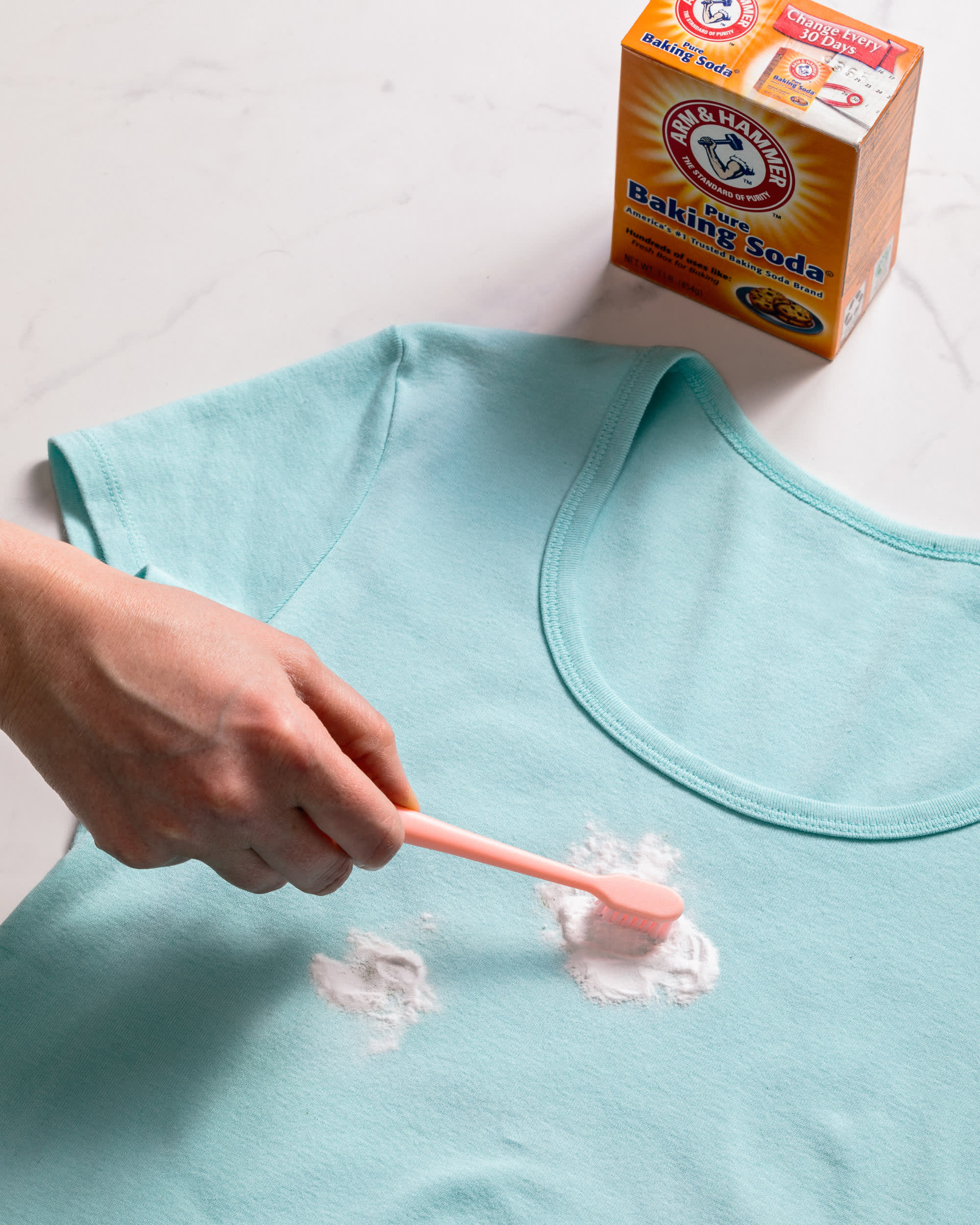Oil stains on your favorite clothes can feel like a disaster. You know the frustration—one careless moment in the kitchen or garage, and suddenly your shirt or jeans are marked with that stubborn greasy spot.
But don’t worry. You don’t have to toss that item or settle for wearing it with a blotch. You’ll discover simple, effective ways to get rid of oil stains quickly and easily. Keep reading, and you’ll learn tips that save your clothes and keep them looking fresh—no matter how tough the stain seems.
:max_bytes(150000):strip_icc()/how-to-remove-oil-stains-clothes-173f94477daa41b386111153ed1f1a2a.jpg)
Credit: www.thespruce.com
Identify The Stain
Identifying the stain is the first step to removing oil marks from clothes. Knowing what type of oil caused the stain helps choose the best cleaning method. Each oil stain has different properties. Some are easier to clean than others. Checking the fabric’s sensitivity also matters. Delicate fabrics need gentle care. Understanding these details saves your clothes from damage.
Types Of Oil Stains
Oil stains come from various sources. Cooking oil, motor oil, and body oils are common types. Cooking oil usually leaves a light, greasy spot. Motor oil creates a dark, thick stain. Body oils often mix with sweat, making the stain harder to see. Identifying the oil type helps decide the right cleaner. Some oils need strong detergent. Others require mild soap.
Assessing Fabric Sensitivity
Fabric type affects how you treat oil stains. Cotton and polyester can handle stronger cleaners. Silk, wool, and linen need gentle products. Test a small hidden area first. Harsh chemicals can ruin delicate fabrics. Use mild soap or special stain removers for sensitive clothes. Always check the garment label for washing instructions. Protect your clothes by knowing their limits.

Credit: www.apartmenttherapy.com
Pre-treatment Steps
Removing oil stains starts with proper pre-treatment. Acting fast increases the chance of complete removal. These first steps prepare the fabric for deeper cleaning.
Handle the stain gently to avoid spreading it. Use common household items for best results. Follow these simple steps to tackle oil stains effectively.
Blotting Excess Oil
Begin by blotting the oil stain with a clean cloth. Press gently to soak up as much oil as possible. Avoid rubbing, which pushes oil deeper into fibers. Use paper towels if cloth is not available. Continue blotting until no more oil transfers to the cloth.
Applying Absorbent Powders
Sprinkle an absorbent powder over the stain. Baking soda, cornstarch, or talcum powder work well. Let the powder sit for at least 15 minutes. It draws oil out of the fabric effectively. Afterward, brush off the powder carefully. Repeat if the stain feels oily to touch.
Effective Cleaning Methods
Removing oil stains from clothes can be simple with the right methods. Effective cleaning techniques break down the oil and lift it from the fabric. Using common household items or special products can restore your clothes quickly. Try these easy and proven ways to get rid of oil stains fast.
Using Dish Soap
Dish soap works well against oil stains. It is designed to cut through grease on dishes, so it can do the same on fabric. Apply a small amount of dish soap directly to the stain. Gently rub it in with your fingers or a soft brush. Let it sit for 5 to 10 minutes. Rinse with warm water, then wash the garment as usual.
Baking Soda And Vinegar
Baking soda and vinegar create a natural cleaning duo. Sprinkle baking soda over the oil stain first. This helps absorb the oil. After a few minutes, pour a small amount of white vinegar on the baking soda. It will fizz and lift the stain. Let it sit for 15 minutes. Then, scrub lightly and rinse with warm water. Wash the clothing normally afterward.
Commercial Stain Removers
Commercial stain removers are made for tough stains. Choose one that targets oil or grease stains. Follow the instructions on the label carefully. Usually, you apply the remover on the stain and wait a few minutes. Then wash the item in the hottest water safe for the fabric. These products can save time and effort on stubborn oil marks.
Washing Tips
Washing clothes stained with oil needs special care. The right washing method helps remove stains effectively without damaging fabric. Follow simple washing tips for best results. These steps help clean clothes thoroughly and keep them looking fresh.
Choosing The Right Water Temperature
Warm water works best to break down oil stains. It melts the oil, making it easier to remove. Cold water may not clean oil properly. Hot water can damage some fabrics or set the stain. Use warm water for cotton and polyester clothes. Use cold water for delicate fabrics to avoid damage.
Selecting Suitable Detergents
Use liquid detergent designed to fight grease and oil. These detergents have ingredients that target oil stains. Powder detergents may not dissolve well in cold water. Avoid using too much detergent as it can leave residue. Pretreat the stain with detergent before washing. This helps loosen the oil for better cleaning.
Drying And Aftercare
Drying and aftercare are important steps in removing oil stains from clothes. Proper drying helps prevent the stain from setting into the fabric. Aftercare ensures the garment stays clean and ready to wear. Follow these tips to care for your clothes after treating oil stains.
Avoiding Heat Damage
Never dry stained clothes with hot air. Heat can make oil stains permanent. Use air drying or a low heat setting instead. Avoid ironing the stained area until the stain is fully gone. Heat locks oil deep inside the fabric fibers. Let the clothes dry naturally for best results.
Checking For Residual Stains
Check clothes carefully before drying. Look closely at the stained area for any signs of oil. Residual stains need another treatment before drying. Washing again can remove leftover oil. Drying with stains still present makes them harder to remove later. Always inspect clothes under good light after washing.
Preventing Future Stains
Preventing future oil stains on clothes saves time and keeps fabrics looking fresh. Small habits and smart choices reduce the risk of stains. Simple steps protect your clothes from getting oily marks. These tips help keep your wardrobe clean and bright.
Protective Clothing Tips
Wear an apron or old shirt while cooking. Choose fabrics that resist stains easily. Dark colors hide oil marks better than light ones. Keep a stain remover pen handy for quick touch-ups. Use sleeves or cloth to cover your clothes during oily tasks.
Quick Response Strategies
Blot oil stains immediately with a paper towel. Avoid rubbing the stain to prevent spreading. Sprinkle baby powder or cornstarch to absorb oil fast. Wash the garment soon after treating the stain. Act quickly to stop oil from setting in the fabric.

Credit: www.youtube.com
Frequently Asked Questions
How Can I Remove Fresh Oil Stains Quickly?
Blot fresh oil stains gently with paper towels. Apply dish soap directly and rub it in. Wash the garment with warm water promptly.
What Household Items Remove Old Oil Stains On Clothes?
Baking soda, vinegar, and dish soap work well. Sprinkle baking soda on the stain, let it sit, then scrub with soap and wash as usual.
Is It Safe To Use Bleach On Oil Stains?
Avoid bleach on oil stains as it can set the stain. Use stain removers or detergents designed for grease instead.
Can I Use Laundry Detergent Alone To Remove Oil Stains?
Laundry detergent helps but may not fully remove oil stains. Pre-treat with dish soap or stain remover for better results.
Conclusion
Oil stains on clothes can be tough to remove, but not impossible. Act quickly to treat the stain for the best results. Use common household items like dish soap or baking soda. Gently rub the stain and wash as usual.
Repeat if needed, but avoid drying before the stain is gone. Clean clothes look fresh and last longer. Keep these tips in mind to save your favorite clothes from oil stains. Simple steps make a big difference. Try them next time you face an oil stain.

